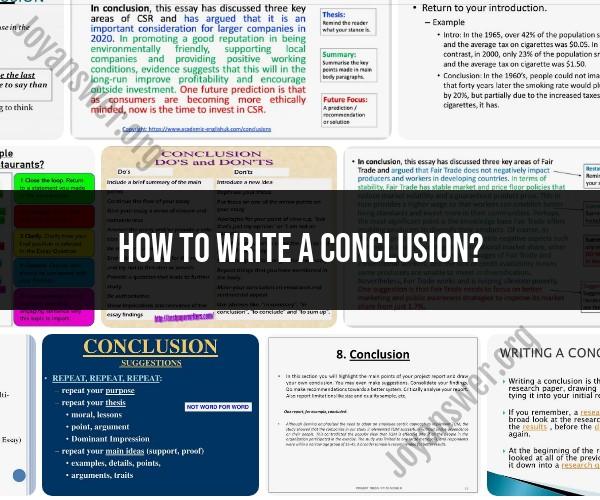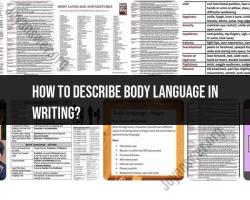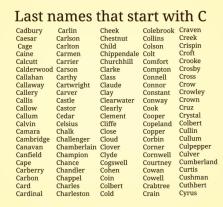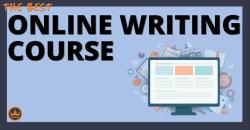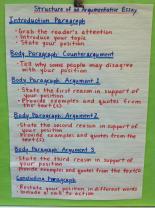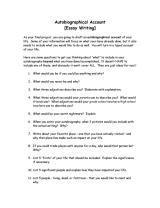How to write a conclusion?
Writing a compelling conclusion is essential to leave a lasting impression on your readers and wrap up your piece effectively. Here are some tips on how to craft a compelling conclusion:
Summarize Key Points:
- Begin your conclusion by summarizing the main points or arguments you've made in your piece. This helps remind your readers of the key takeaways and reinforces your message.
Restate Your Thesis or Main Idea:
- Reiterate your thesis statement or main idea in a concise and clear manner. This reinforces the central message of your work and ensures that your readers remember it.
Offer Closure:
- Your conclusion should provide a sense of closure for your readers. Make it clear that you have reached the end of your discussion or argument by using words or phrases like "in conclusion," "to sum up," or "finally."
End with Impact:
- Craft a memorable closing sentence that leaves a strong impression on your readers. This could be a thought-provoking statement, a call to action, a question, a relevant quote, or a surprising fact. Avoid introducing new information or ideas in your conclusion.
Tie Back to the Introduction:
- If possible, make a connection between your conclusion and the introduction of your piece. This can create a sense of symmetry and show how you've come full circle in your discussion.
Consider the Tone:
- The tone of your conclusion should be consistent with the overall tone of your writing. If you've used a serious tone throughout, maintain it in the conclusion. If your piece is more informal, your conclusion can reflect that as well.
Keep It Concise:
- Conclusions should be concise and to the point. Avoid unnecessary repetition or restating every detail. Focus on the most important elements to leave a lasting impact.
Avoid Introducing New Information:
- Your conclusion is not the place to introduce new ideas or information that hasn't been discussed earlier in your piece. Stick to summarizing and reinforcing what you've already presented.
Consider the Audience:
- Think about your target audience when crafting your conclusion. What message or call to action would resonate most with them? Tailor your conclusion to your specific readers.
Revise and Proofread:
- Like any other part of your writing, your conclusion should be well-edited and free from grammatical or spelling errors. A polished conclusion adds to its overall impact.
Remember that a well-crafted conclusion can leave a lasting impression on your readers and effectively drive home the main message of your writing. Take the time to carefully structure and refine your conclusion to make it as compelling as possible.
Crafting a Strong Conclusion: Writing Tips and Strategies
A strong conclusion is essential for any piece of writing. It is the final opportunity to leave a lasting impression on your reader and to reinforce the main points of your argument.
Here are some tips and strategies for crafting a strong conclusion:
- Restate your thesis statement. This will help to remind your reader of the main point of your paper. However, avoid simply repeating your thesis statement verbatim. Instead, try to rephrase it in a new and interesting way.
- Summarize your main points. Briefly review the main points that you made in the body of your paper. This will help to tie your argument together and to show your reader how your ideas all fit together.
- Leave your reader with something to think about. Ask a question, make a prediction, or offer a call to action. This will help to leave your reader with a lasting impression and to encourage them to think more about your topic.
Here is an example of a strong conclusion:
In conclusion, the evidence clearly shows that climate change is real and that it is caused by human activity. We must take action now to reduce greenhouse gas emissions and to mitigate the effects of climate change. The future of our planet depends on it.
The Art of Concluding Your Writing: A Comprehensive Guide
A comprehensive guide to concluding your writing should include the following:
- Different types of conclusions. There are many different types of conclusions, such as the summary conclusion, the call to action conclusion, and the question conclusion. Choose the type of conclusion that is most appropriate for your topic and your audience.
- How to structure your conclusion. A well-structured conclusion should include a restatement of your thesis statement, a summary of your main points, and a closing statement.
- How to write a strong closing sentence. Your closing sentence should be memorable and thought-provoking. It should leave your reader with something to think about.
Here is an example of a comprehensive guide to concluding your writing:
Different Types of Conclusions
- Summary conclusion: This type of conclusion summarizes the main points of your paper. It is a good choice for papers that are informative or persuasive.
- Call to action conclusion: This type of conclusion encourages your reader to do something, such as sign a petition, donate to a charity, or vote for a candidate. It is a good choice for papers that are persuasive or argumentative.
- Question conclusion: This type of conclusion poses a question to your reader. It is a good choice for papers that are intended to make the reader think critically about a topic.
How to Structure Your Conclusion
- Restatement of thesis statement: This should be a rephrased version of your thesis statement. It should remind your reader of the main point of your paper.
- Summary of main points: This should be a brief review of the main points that you made in the body of your paper. It should show your reader how your ideas all fit together.
- Closing statement: This should be a memorable and thought-provoking statement that leaves your reader with something to think about.
How to Write a Strong Closing Sentence
- Use strong verbs. Avoid using weak verbs like "is" and "was." Instead, use strong verbs like "shows," "proves," and "concludes."
- Be specific. Avoid using vague statements. Instead, be specific about the point that you are trying to make.
- Be concise. Your closing sentence should be to the point. Avoid using unnecessary words and phrases.
Here is an example of a strong closing sentence:
In conclusion, the evidence clearly shows that climate change is real and that it is caused by human activity. We must take action now to reduce greenhouse gas emissions and to mitigate the effects of climate change. The future of our planet depends on it.
How to Summarize Your Thoughts Effectively in a Conclusion
To summarize your thoughts effectively in a conclusion, you should:
- Restate your thesis statement in a new and interesting way.
- Summarize the main points of your paper, showing how they all fit together.
- Leave your reader with something to think about, such as a question, a prediction, or a call to action.
Here is an example of a conclusion that effectively summarizes the thoughts of the writer:
In conclusion, the evidence clearly shows that climate change is real and that it is caused by human activity. We must take action now to reduce greenhouse gas emissions and to mitigate the effects of climate change. The future of our planet depends on it.
This conclusion restates the thesis statement in a new and interesting way, summarizes the main points of the paper, and leaves the reader with something to think about.
